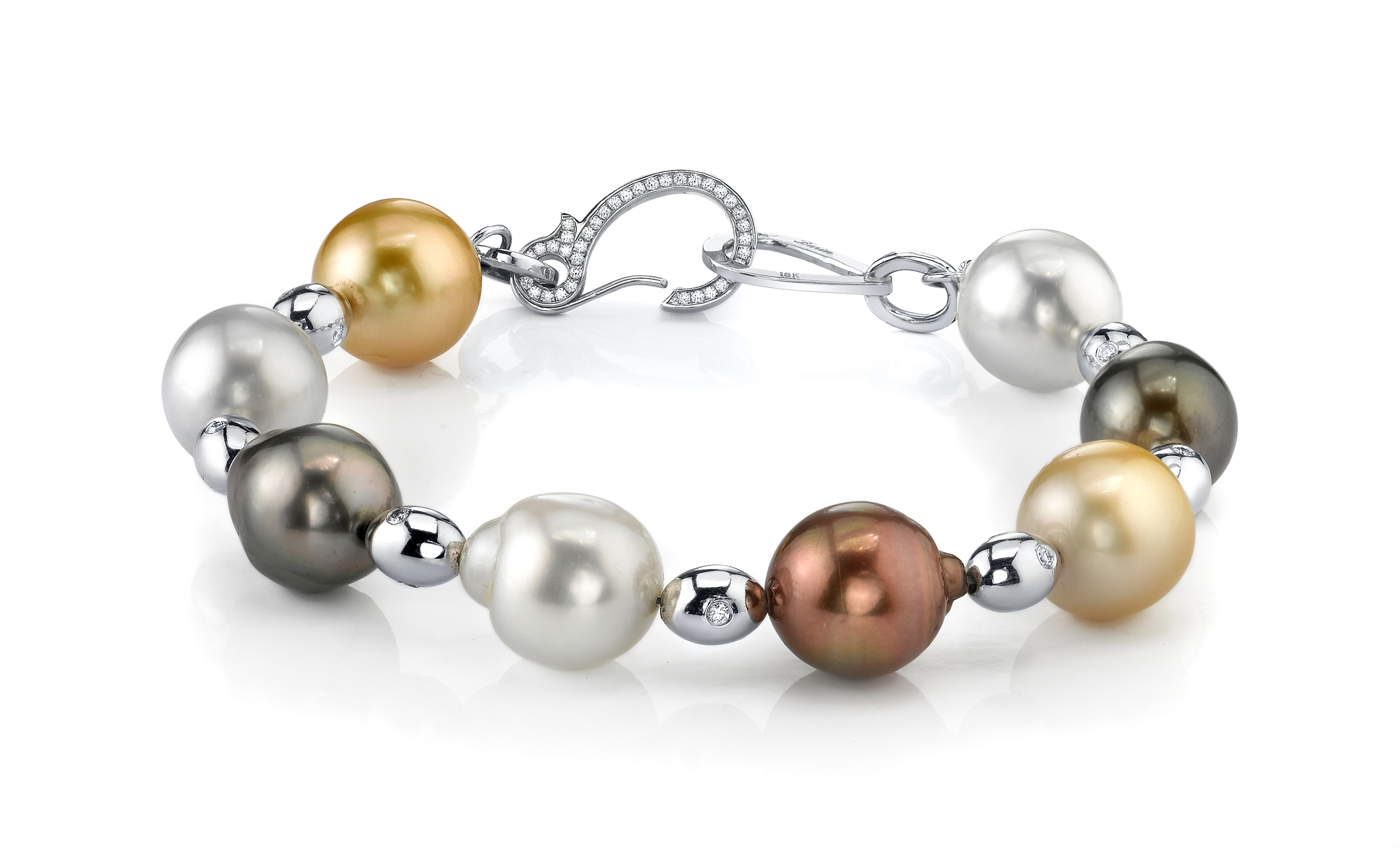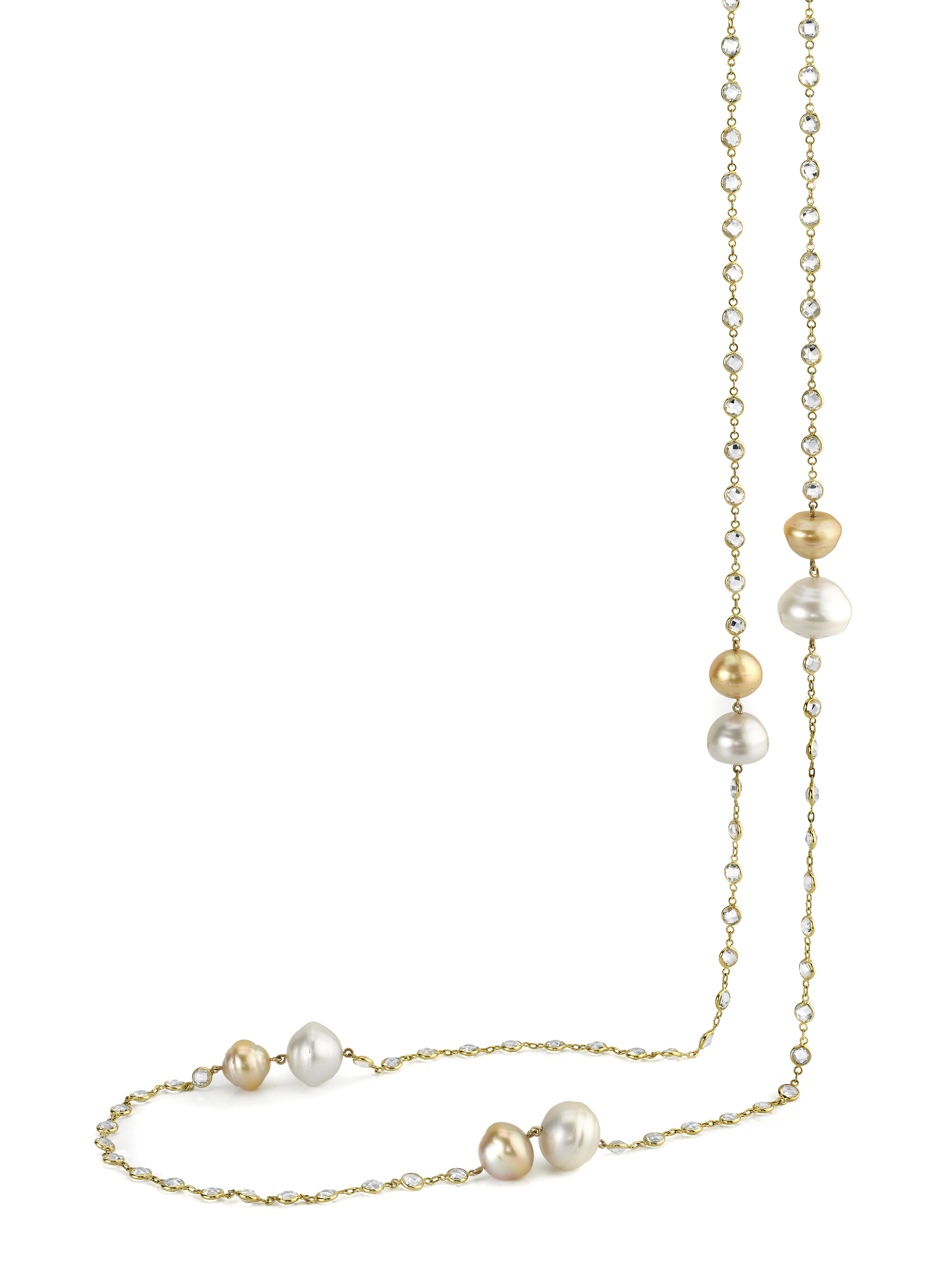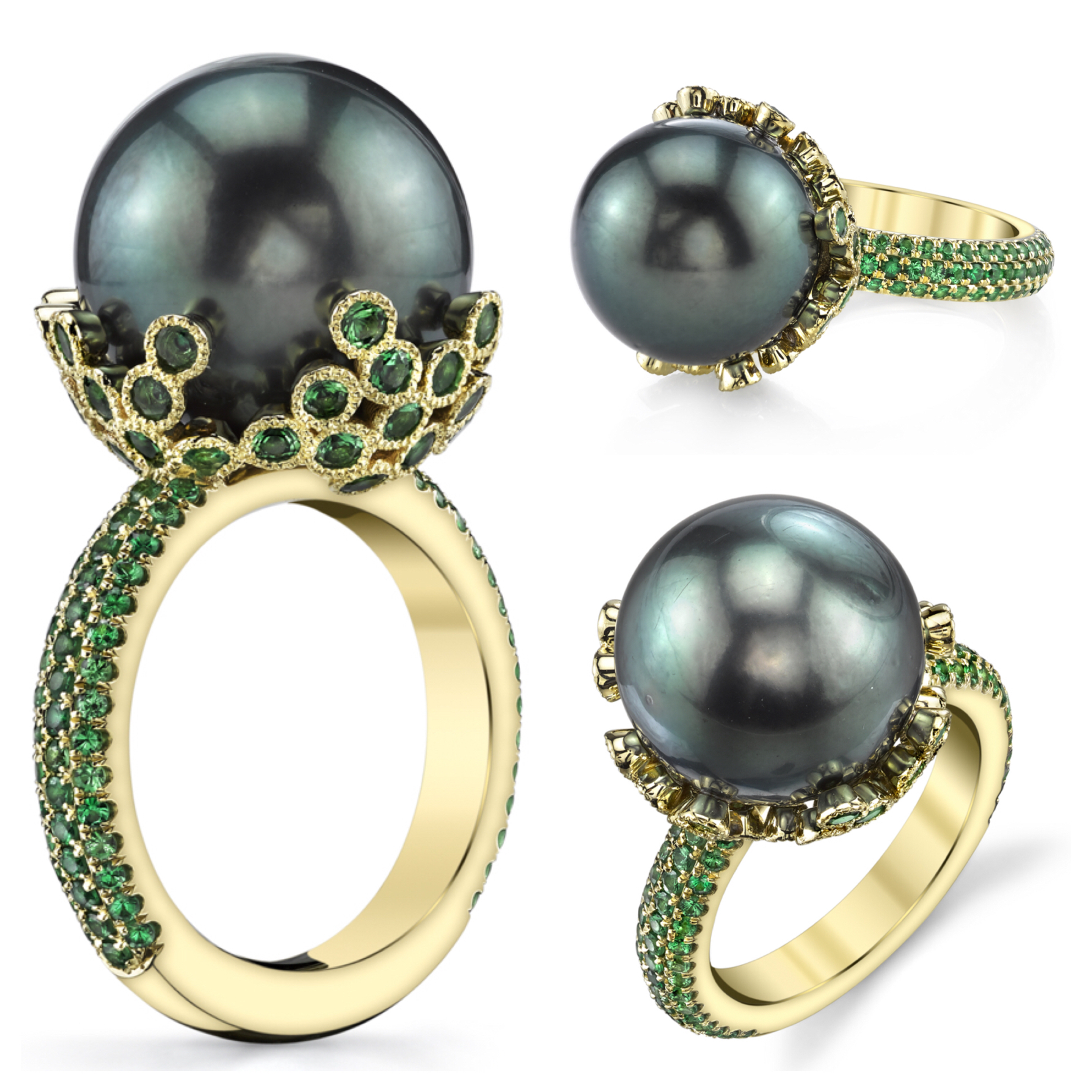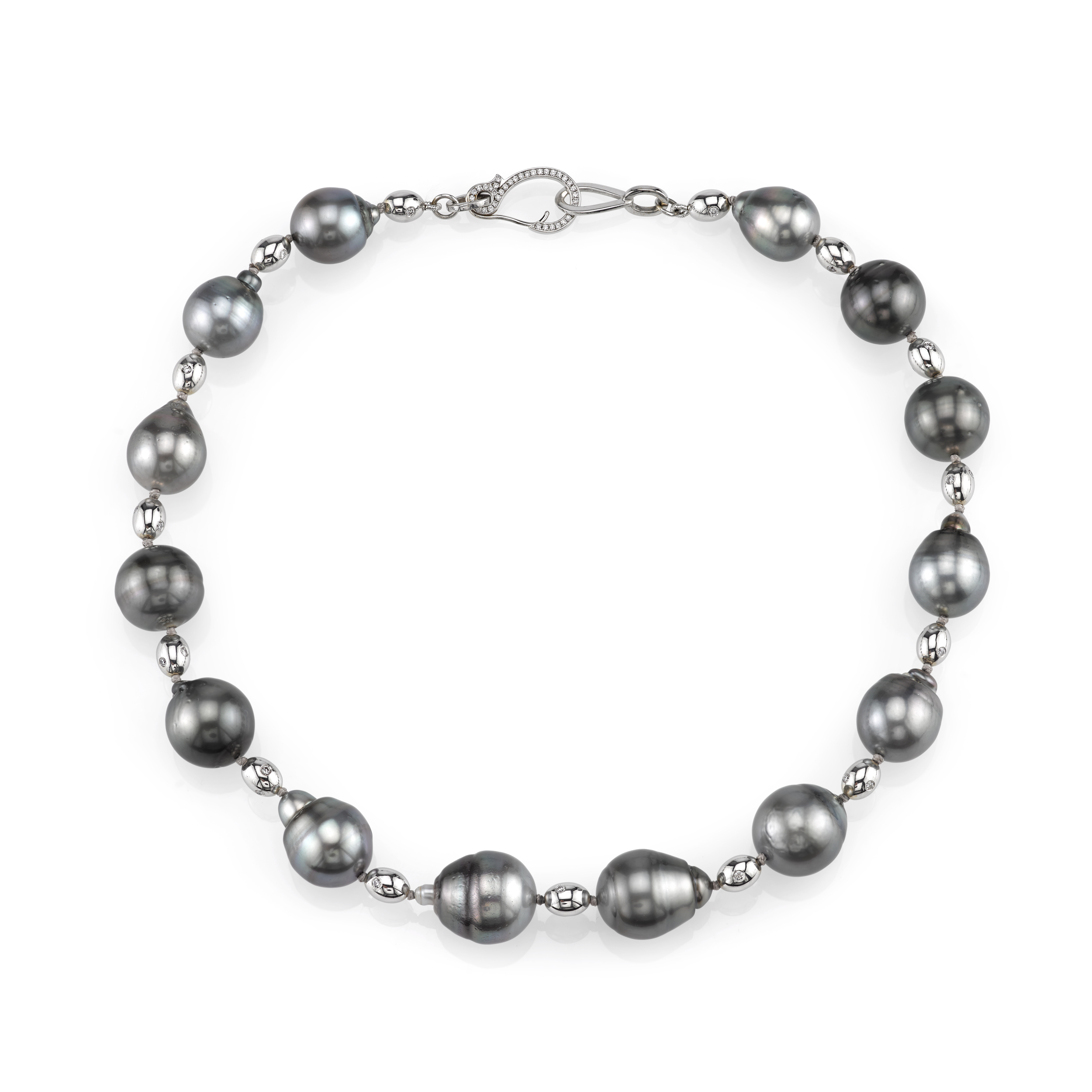South Sea Pearls
Pearls are one of the first gems adorned by women and have been used as decorative items as far back as the 5th century BC. Over time, pearls became a status symbol personifying wisdom, power and wealth, and happen to be the only gemstones made by a living organism. When a foreign substance passes through the organism of a mollusk and irritates the mantle, the mollusk begins to coat the irritant with a substance called nacre. Layers of nacre eventually form a pearl ranging in a variety of colors and shapes. Round pearls are the most expensive and uncommon, followed by baroque pearls, which are irregular and uniquely shaped.
Freshwater pearls are primarily grown in mussels living in man-made lakes and reservoirs in China. Saltwater pearls, on the other hand, are grown in oysters living in bays and inlets around the world. Due to the thickness and composition of nacre, saltwater pearls are more lustrous and glossy than freshwater pearls.
South Sea pearls, produced in Australia, Indonesia and the Philippines, are renowned for their size, smoothness, and roundness. They range in size from 9-20mm (compared to the standard 2-10mm cultured pearls) and are naturally white, cream, or golden in color. The rarity and sensitivity of the type of oyster that produces these pearls makes cultivation much more difficult, making them more expensive.
Due to their naturally dark color, Tahitian pearls have become some of the most sought after, expensive pearls in the world. Unlike black freshwater and akoya pearls, which are irradiated or dyed, Tahitian pearls obtain their look naturally and can be found in an incredible array of iridescent color. Due to their vast color range, matching these pearls into a perfect, finished strand is an enormous task requiring thousands of loose pearls.















